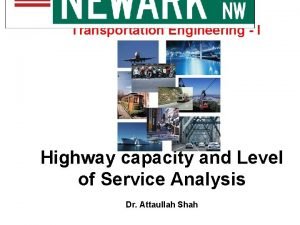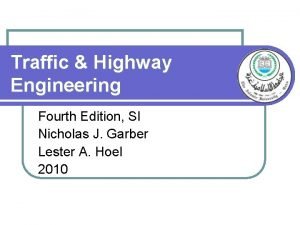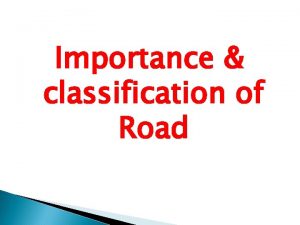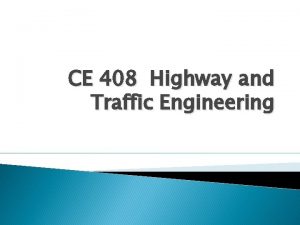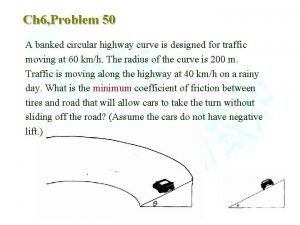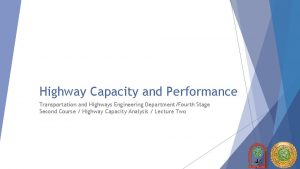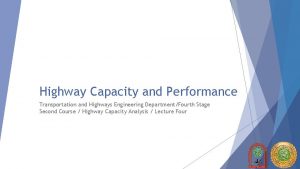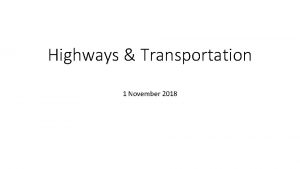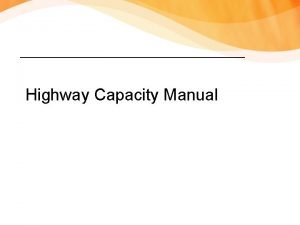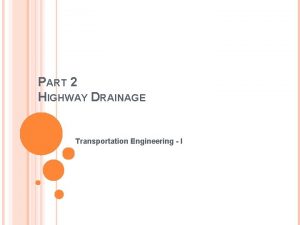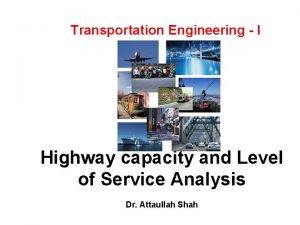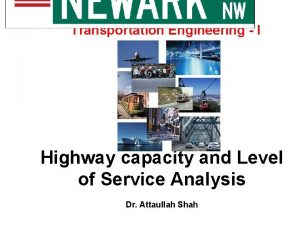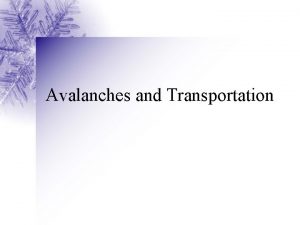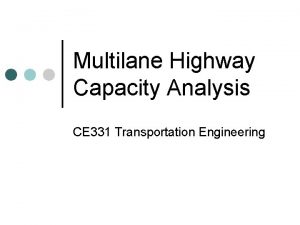Highway Capacity and Performance Transportation and Highways Engineering












- Slides: 12

Highway Capacity and Performance Transportation and Highways Engineering Department/Fourth Stage Second Course / Highway Capacity Analysis / Lecture Three

Multilane Highway LOS It is the main road, which connects two or more destinations. This highway has at least more than one lane for the separate use of traffic flow in both the directions. It also has limited access to merging vehicles, has periodical pauses to streamline traffic at signalized intersections with interval not closer than 3. 0 km.

Estimating Demand

Calculate Flow Rate


Vehicles Flow Rate (veh/h)

of PHF for example 4350/5000= 0. 87

Heavy Vehicle Adjustment Heavy vehicles affect traffic Slower, f. HV larger increases number of passenger cars to account for presence of heavy trucks


f(HV) General Grade Definitions: Level: combination of alignment (horizontal and vertical) that allows heavy vehicles to maintain same speed as passenger cars (includes short grades 2% or less) Rolling: combination that causes heavy vehicles to reduce speed substantially below P. C. (but not crawl speed for any length) Mountainous: Heavy vehicles at crawl speed for significant length or frequent intervals Use specific grade approach if grade less than 3% is more than ½ mile or grade more than 3% is more than ¼ mile)

Example: for 10% heavy trucks on rolling terrain, what is f. HV ? For rolling terrain, ET = 2. 5 f. HV = _____1_______ = 0. 87 1 + 0. 1 (2. 5 – 1)

Driver Population Factor (f. P) Non-familiar users affect capacity fp = 1, familiar users fp = 0. 85, unfamiliar users
 Chapter 1 driving and mobility
Chapter 1 driving and mobility What are the parts of the highway transportation system
What are the parts of the highway transportation system Chapter 1 you are the driver
Chapter 1 you are the driver Highway capacity and level of service
Highway capacity and level of service Traffic and highway engineering 4th edition
Traffic and highway engineering 4th edition Classification of roads as per nagpur road plan
Classification of roads as per nagpur road plan Highway engineering syllabus
Highway engineering syllabus Ce 408
Ce 408 A banked circular highway curve is designed
A banked circular highway curve is designed Channel capacity planning
Channel capacity planning Dirty data
Dirty data Scope of traffic engineering
Scope of traffic engineering Transportation engineering by rajesh bhagat
Transportation engineering by rajesh bhagat



